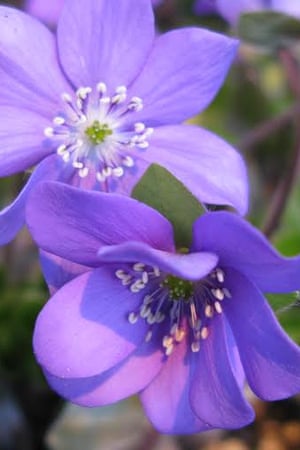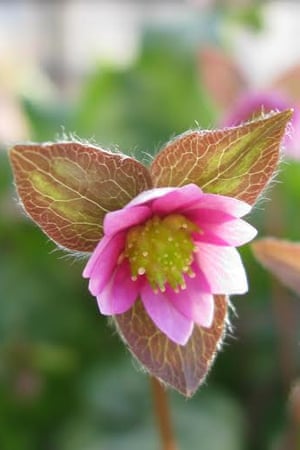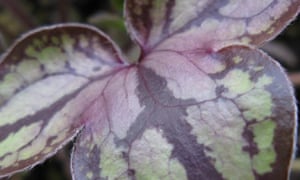
Alongside the first of the green-flowered hellebores and the early flowers of thefetid adders tongue, hidden among the white canvas of snowdrops in the woodland garden, there grows a plant that takes some closer inspection.

Similar to, but certainly not the same as, its more noticeable cousins the wood anemones, Hepatica nobilis does its utmost not to be noticed. Get your eye in, though, and their flowers shine up at you, giving a bright relief to the more subtle colours of early spring. What’s more, their leaves are exquisitely marked with silver and purple blotches that are almost metallic, particularly when wet from the thaw.
It’s these leaves that have earned them their name. Hepatica comes from the ancient Greek hepar for liver, and just like the human liver, the leaves have three lobes: hence its common names include liverleaf and liverwort. The doctrine of signatures promoted their use in the treatment of liver disease: Paracelsus, the 13th century Swiss German philosopher, had stated “Nature marks each growth … according to its curative benefit”. Later the botanist William Coles wrote that god had given “Herbes for the use of men, and hath given them particular signatures, whereby a man may read … the use of them.”

This really was the most cutting edge health care of the time. However, as with so many of these treatments, hepaticas are poisonous when used in large quantities by inexperienced practitioners. The plant, like other members of the buttercup family to which it belongs, contains Protoanemonin or Ranunculin which when ingested can cause nausea, vomiting, dizziness, spasms, or paralysis, and on skin contact cause itching and painful blistering. I wonder how many died at the hands of the doctrine of signatures?
In the late 1800s in the USA, hundreds of tonnes of hepatica leaves were gathered for use in patent medicine, such as Dr Roder’s Liverwort and Tar syrup, and even more imported from Europe to supplement this need. It is surprising to think that American natives Hepatica americana, H. acutiloba and H. nobilis survived this onslaught.
80% of the world population rely on plants as their primary source of medicines, and between 50,000 – 80,000 plant species are used worldwide for their curative properties. Half of our prescription drugs are based on plants and the compounds they contain, but overharvesting of these medicinal plants is a huge threat to them. We don’t know where the next antibiotic or the next cancer treatment may come from, and I wonder how many other benefits to humanity such diminutive plants as hepaticas may offer up?

With between six and 11 species (it all depends on which taxonomist you consult), and hundreds of cultivars, these early spring jewels deserve more attention than they currently get. I am pleased to say that this year they are coming out of the shadows of the snowdrops they flower alongside, and, just like snowdrops, are being offered their own special events. I really hope these hepatica days become a feature of the annual horticultural calendar.
[“source-theguardian”]


























